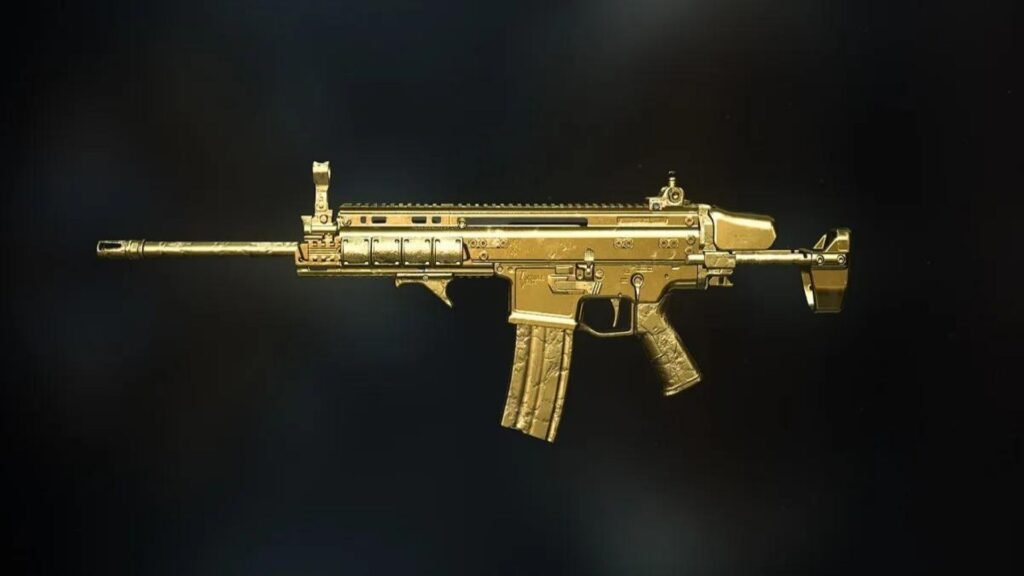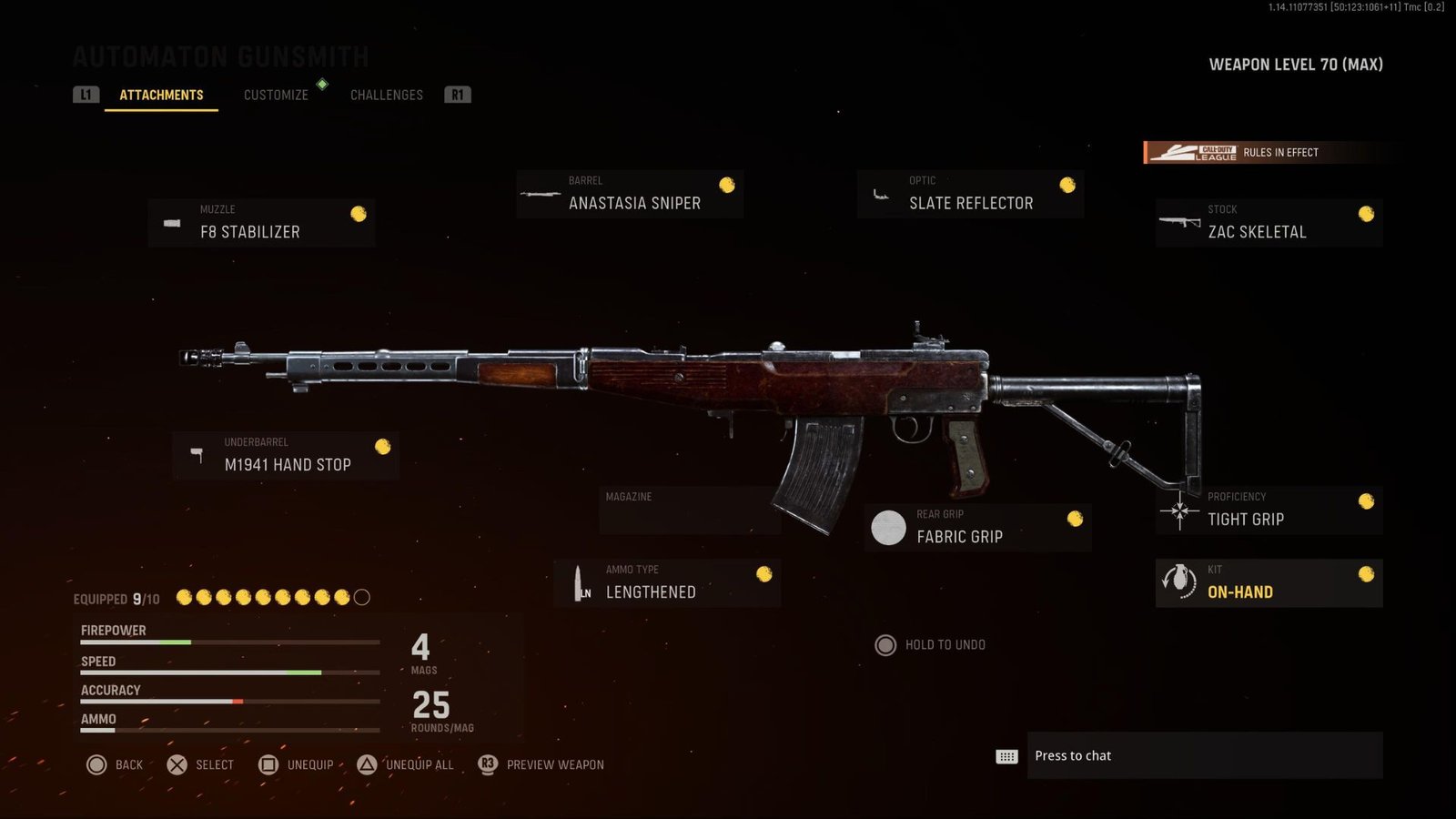In competitive shooter games, choosing the right loadout can make a significant difference between victory and defeat. A well-optimized loadout enhances your performance, adapts to various situations, and complements your team’s strategy. This article explores the best loadouts for competitive play, focusing on weapons, equipment, and strategies that can give you an edge in high-stakes matches.
Competitive play in shooter games demands more than just skillful aiming; it requires strategic planning and the right equipment. An effective loadout can greatly influence your performance, providing you with the tools needed to succeed in various scenarios. Understanding how to optimize your loadout based on game mechanics and personal playstyle is key to achieving competitive success.

Choosing the Right Weapons
Assault Rifles:
- Versatile and Balanced: Assault rifles are popular for their versatility and balanced performance. They offer a good mix of accuracy, fire rate, and damage, making them effective in both close and long-range engagements. Examples include the M4A1 in “Call of Duty” and the AEK-971 in “Battlefield.”
- Customization: Customize your assault rifle with attachments such as scopes, grips, and extended mags to enhance accuracy, stability, and firepower.
Sniper Rifles:
- Long-Range Precision: Sniper rifles are ideal for long-range engagements where precision is crucial. They can eliminate enemies from a distance, making them valuable for holding strategic positions. Popular options include the AWP in “Counter-Strike” and the Kar98k in “Warzone.”
- Attachments: Equip your sniper rifle with high-powered scopes and bipods to improve accuracy and stability while aiming from afar.
Submachine Guns (SMGs):
- Close-Quarters Combat: SMGs excel in close-quarters combat with their high fire rate and maneuverability. They are perfect for aggressive playstyles and quick engagements. Examples include the MP5 in “Rainbow Six Siege” and the Uzi in “Call of Duty.”
- Attachments: Add attachments like suppressors and laser sights to improve handling and stealth during close-range encounters.
Essential Equipment
Grenades and Explosives:
- Tactical Utility: Grenades and explosives are crucial for clearing out enemies and controlling the battlefield. Flashbangs, smoke grenades, and frag grenades each serve specific purposes. Use flashbangs to disorient opponents, smoke grenades for cover, and frag grenades to flush out enemies.
- Loadout Tips: Carry a mix of grenades based on the map and your role. For example, use smoke grenades to block sightlines and frag grenades to counter entrenched enemies.
Armor and Shields:
- Protection: Armor and shields provide additional protection and can be critical in high-pressure situations. Body armor reduces incoming damage, while shields offer temporary cover during engagements. Consider using armor plates in games like “Warzone” and tactical shields in games like “Rainbow Six Siege.”
- Upgrade: Regularly upgrade your armor and shields when possible to maintain a defensive advantage.
Utility Items
Health Packs and Med Kits:
- Self-Sustain: Health packs and med kits are essential for self-sustain and surviving prolonged battles. Carry enough to heal yourself and stay in the fight. In games like “PUBG,” healing items can turn the tide in critical moments.
- Usage: Use health packs strategically during downtime or after taking damage, ensuring you’re at full health before re-engaging.
Special Abilities:
- Unique Advantages: Many competitive shooters offer special abilities or gadgets that provide unique advantages. For example, deployable drones in “Rainbow Six Siege” or tactical abilities in “Apex Legends.” Choose abilities that complement your playstyle and team strategy.
- Cooldown Management: Manage the cooldowns of your abilities to use them effectively in crucial moments. Coordinate with your team to maximize the impact of your special abilities.
Adapting to Map and Game Mode
Map-Specific Loadouts:
- Adaptation: Different maps and game modes may require adjustments to your loadout. For instance, a long-range loadout might be necessary for maps with open spaces, while close-quarters combat gear is better for indoor or confined areas.
- Practice and Adjustment: Practice on various maps to understand their layout and adjust your loadout accordingly. Experiment with different configurations to find what works best for each scenario.
Game Mode Considerations:
- Objective-Based Modes: In objective-based game modes, such as capture the flag or bomb defusal, tailor your loadout to support the objectives. For example, use smoke grenades for cover during objective captures or choose defensive equipment for holding positions.
- Team Roles: Adapt your loadout based on your team’s roles and strategy. For example, if you’re assigned a defensive role, equip gear that enhances survivability and crowd control.
Continuous Improvement
Analyze and Adjust:
- Performance Review: Regularly review your performance and adjust your loadout based on your experiences. Analyze what works well and what needs improvement to continuously optimize your gear.
- Stay Updated: Keep up with game updates and balance changes that may affect loadout effectiveness. New patches or updates can introduce changes that impact weapon performance and equipment utility.
Conclusion
Choosing the best loadout for competitive play involves understanding the strengths and weaknesses of different weapons and equipment, adapting to various scenarios, and continuously refining your setup. By optimizing your loadout based on game mechanics and personal preferences, you can enhance your performance and increase your chances of success in competitive matches.

